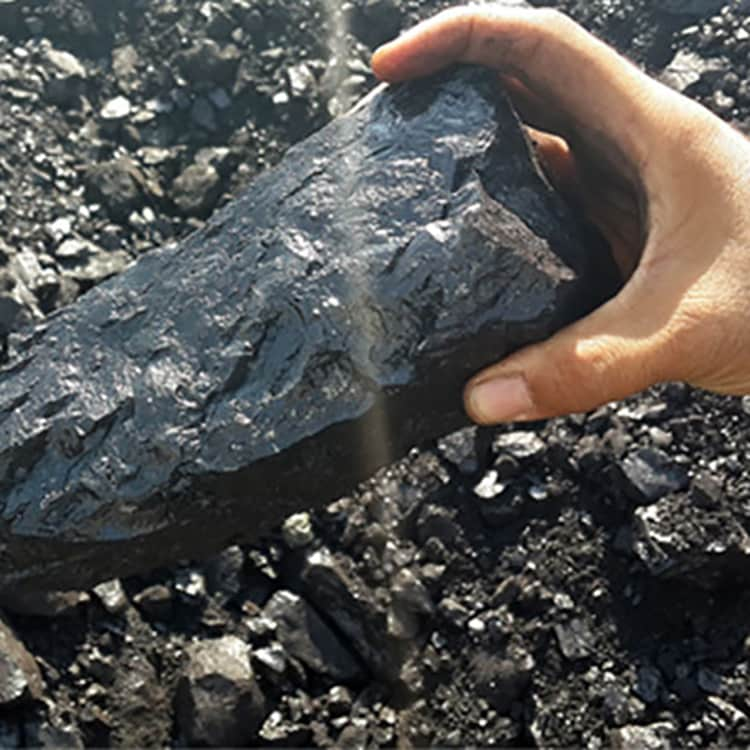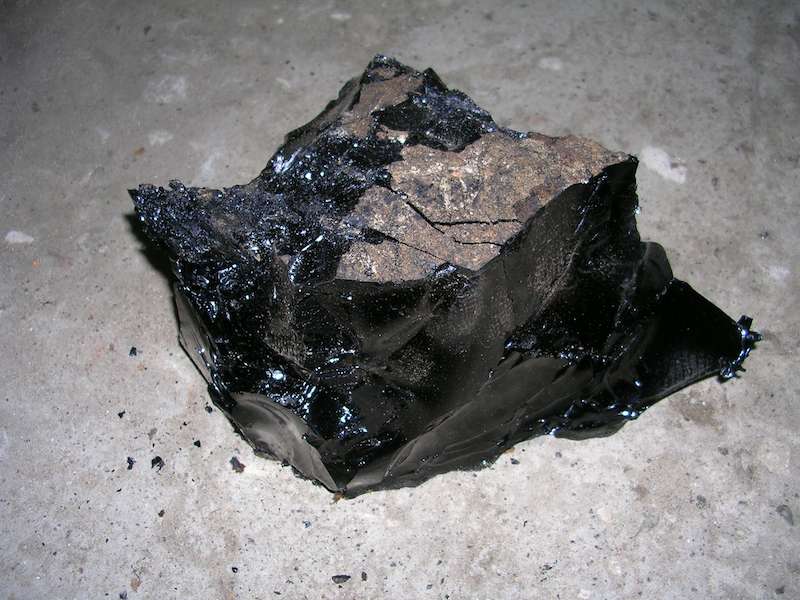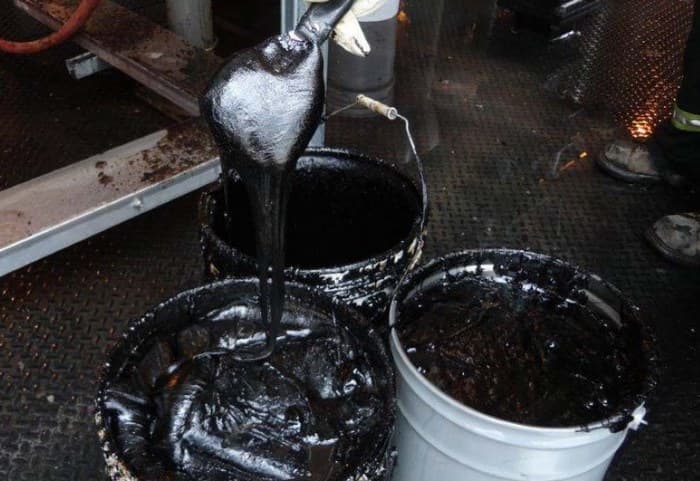
What is Natural Bitumen?
Natural bitumen, also known as asphalt or tar sands, is a type of petroleum deposit that exists in a semi-solid or solid state. It is composed of a mixture of hydrocarbons, primarily consisting of heavy, viscous crude oil. Unlike conventional liquid crude oil, natural bitumen is more dense and has a higher viscosity, making it flow much slower or not at all at ambient temperatures.
Natural bitumen is typically found mixed with sand, clay, and water, forming bituminous sands or oil sands deposits. These deposits are primarily located in certain regions around the world, such as Alberta, Canada, and Venezuela. Extracting and processing natural bitumen into usable forms such as synthetic crude oil or asphalt requires specialized techniques, including mining or in situ extraction methods, followed by separation and upgrading processes.
Elika Gilsonite supplier natural bitumen
Elika Gilsonite is a leading supplier and provider of natural bitumen, catering to diverse industries with a comprehensive range of bitumen products. Our company specializes in offering various types of bitumen, including Gilsonite Bitumen, Gilsonite Asphalt, and Gilsonite Powder, meeting the specific needs and requirements of our clients.
At Elika Gilsonite, we pride ourselves on our ability to source and supply high-quality bitumen products, ensuring reliability and consistency in performance. With our expertise and extensive network, we can procure any type of bitumen to meet the demands of different applications, from road construction to industrial and commercial projects.
One of our key strengths lies in our commitment to customer satisfaction and service excellence. We strive to provide exceptional support and assistance to our clients throughout the procurement process, from product selection to delivery and beyond. Our team of knowledgeable professionals is dedicated to understanding the unique requirements of each customer and delivering tailored solutions that meet their specific needs.
With Elika Gilsonite, you can trust in our reliability as a supplier and our dedication to providing superior products and services. Whether you require standard bitumen grades or specialized formulations, we have the expertise and resources to deliver the right solutions for your project. Experience the difference with Elika Gilsonite – your trusted partner for all your bitumen needs.

natural bituminous material
Natural bituminous materials refer to naturally occurring substances that contain significant amounts of bitumen. These materials are often found in deposits known as bituminous sands or oil sands. Bitumen, a type of hydrocarbon, is a viscous and tar-like substance that is a byproduct of petroleum refinement or occurs naturally in certain geological formations.
Bituminous materials can vary in composition and properties, depending on factors such as the source of the deposit and the geological processes involved in its formation. Common examples of natural bituminous materials include:
Asphalt:
Also known as asphaltum, asphalt is a naturally occurring bituminous material commonly found in deposits or as a residue from petroleum distillation. It is often used in road construction, roofing, waterproofing, and various industrial applications.
Pitch:
Pitch is a dark, viscous substance derived from the distillation of coal tar or from natural sources such as bituminous sands. It has been historically used in waterproofing, sealing, and as a binder in various applications.
Bituminous Sands:
Bituminous sands, also known as oil sands or tar sands, are sedimentary deposits containing a mixture of bitumen, sand, clay, and water. These deposits are primarily found in regions such as Alberta, Canada, and Venezuela. Bituminous sands are a significant source of unconventional oil production and require specialized extraction and processing techniques.
Natural Asphalts
Natural asphalts are deposits of solid or semi-solid bituminous materials that occur in certain geological formations. These materials have been historically used in road construction, waterproofing, and as a binder in various applications.
Natural bituminous materials have various industrial, commercial, and economic uses due to their waterproofing, adhesive, and binding properties. However, their extraction and processing can present environmental challenges and require specialized techniques to mitigate their impact.

Natural bitumen price
The price of natural bitumen, like other commodities, can vary significantly depending on factors such as market demand, supply levels, geopolitical events, and economic conditions. Additionally, the price of natural bitumen can differ based on its grade, quality, and regional availability.
For example, in regions where natural bitumen deposits are abundant, such as Alberta, Canada, and Venezuela, the price might be influenced by local production and extraction costs, as well as transportation infrastructure. In areas where natural bitumen is imported, prices may be affected by shipping costs, import/export regulations, and exchange rates.
To obtain the most accurate and up-to-date information on natural bitumen prices, it’s essential to consult commodity market reports, industry publications, and specialized databases. Additionally, contacting suppliers or trading platforms that deal with bitumen products can provide insights into current pricing trends and market conditions.
Natural bitumen in Asphalt
Natural bitumen, also known as asphalt, plays a crucial role in the production of asphalt pavement, commonly used for road construction and surfacing. In asphalt pavement, natural bitumen serves as the binder or glue that holds together the aggregates (such as gravel, sand, and stone) to form a durable and flexible surface.
Here’s how natural bitumen is typically used in asphalt pavement production:
Aggregate Selection:
Different types and sizes of aggregates are selected based on the specific requirements of the pavement, such as traffic volume, climate conditions, and load-bearing capacity.
Mixing:
The aggregates are heated to a high temperature to make them more workable. Meanwhile, the natural bitumen is heated to reduce its viscosity, making it easier to mix with the aggregates.
Binder Formation:
The heated aggregates and natural bitumen are then combined in a mixing plant. The natural bitumen coats the surface of the aggregates, forming a binder that binds them together.
Placement:
The hot asphalt mixture is transported to the construction site and placed and compacted with heavy machinery to achieve the desired density and smoothness.
Curing:
After placement, the asphalt pavement undergoes a curing process to allow the natural bitumen to harden and bond with the aggregates.
Surface Treatment
Depending on the project requirements, additional surface treatments such as sealing, milling, or overlaying may be applied to the asphalt pavement.
Natural bitumen provides several key benefits to asphalt pavement, including:
- Adhesion: Natural bitumen binds the aggregates together, providing cohesion and stability to the pavement structure.
- Flexibility: Asphalt pavements are flexible and can accommodate minor movements and deformations without cracking.
- Waterproofing: The impermeable nature of natural bitumen helps to prevent water infiltration, reducing the risk of damage from freeze-thaw cycles and extending the pavement’s lifespan.
Overall, natural bitumen is a fundamental component of asphalt pavement, contributing to its strength, durability, and performance in various applications.

Natural bitumen in Construction
Natural bitumen, also known as asphalt, plays a significant role in various aspects of construction due to its adhesive, waterproofing, and binding properties. Here are some common uses of natural bitumen in construction:
Road Construction:
Asphalt is extensively used for road construction worldwide. It serves as a binder in asphalt concrete, which is a mixture of aggregates (such as gravel, sand, and crushed stone) and asphalt binder. Asphalt pavements provide a smooth, durable, and flexible surface for vehicles while withstanding heavy traffic loads and varying weather conditions.
Roofing:
Asphalt is a key component in the manufacturing of roofing materials, such as asphalt shingles and rolled roofing products. These materials provide weatherproofing, waterproofing, and insulation for residential, commercial, and industrial buildings.
Waterproofing:
Asphalt-based products are used for waterproofing applications in construction. Asphalt emulsions, coatings, and membranes are applied to building foundations, basements, roofs, and underground structures to prevent water infiltration and protect against moisture damage.
Paving:
Asphalt is used for paving driveways, sidewalks, parking lots, and recreational surfaces like tennis courts and playgrounds. Asphalt pavements offer a cost-effective, durable, and aesthetically pleasing solution for various paving needs.
Sealants and Adhesives:
Asphalt-based sealants and adhesives are commonly used in construction for bonding materials, sealing joints, and filling cracks in concrete, asphalt, and other surfaces. These products provide strong adhesion and weather resistance, enhancing the durability and longevity of structures.
Bridge Deck Waterproofing:
Asphalt overlays or membranes are often applied to bridge decks to provide waterproofing and protect the underlying structure from corrosion and deterioration caused by water and de-icing chemicals.
Expansion Joints:
Asphalt-based materials are used in expansion joints to accommodate movement, vibration, and thermal expansion in concrete and asphalt pavements, bridges, and other structures.
Soundproofing:
Asphalt pavements and membranes contribute to sound absorption and noise reduction in construction projects, particularly in urban areas and transportation infrastructure.
Overall, natural bitumen plays a vital role in construction, offering versatile solutions for roadways, buildings, and infrastructure projects while providing durability, waterproofing, and environmental benefits.
natural bitumen uses
Natural bitumen, also known as asphalt, has various uses across different industries:
Road Construction: Asphalt is one of the primary materials used in road construction. It is mixed with aggregate (such as gravel or sand) and laid down as a durable surface for roads, highways, and parking lots.
Roofing: Asphalt is used in the manufacturing of roofing materials, including asphalt shingles and rolled roofing products. These materials provide weatherproofing and insulation for residential and commercial buildings.
Waterproofing: Asphalt-based products are used for waterproofing applications, such as sealing roofs, foundations, and underground structures like basements and tunnels.
Paving: Asphalt is commonly used for paving driveways, sidewalks, and recreational surfaces like tennis courts and playgrounds due to its durability and smooth finish.
Industrial Applications: Asphalt is used in various industrial processes, such as in the manufacturing of adhesives, coatings, and sealants.
Marine Construction: Asphalt is used in marine construction projects for sealing underwater structures and as a component in underwater concrete.
Emulsions and Binders: Asphalt emulsions are used as binders in the production of asphalt mixtures for road construction and maintenance, as well as in surface treatments for preserving and rehabilitating existing pavement surfaces.
Chemical Industry: Asphalt serves as a feedstock for producing various chemical products, including asphalt-based polymers used in construction materials and industrial applications.
Natural bitumen in Foundry
Natural bitumen, commonly known as asphalt, is not typically used directly in foundry operations. Foundries primarily deal with the casting of metals, such as iron, steel, aluminum, and bronze, into various shapes and components. However, while natural bitumen may not be directly involved in foundry processes, it can indirectly play a role in supporting foundry operations in the following ways:
Mold and Core Making
Foundries often use sand molds and cores to create the shapes into which molten metal is poured. Natural bitumen-based products, such as asphalt binders or additives, can be used in sand molding and core-making processes to improve the properties of the sand mixture, such as strength, cohesion, and resistance to heat and moisture.
Refractory Materials:
Refractory materials are used in foundries to line furnaces, crucibles, and other equipment exposed to high temperatures during metal melting and casting. While natural bitumen itself is not a common refractory material, some asphalt-derived products may be used as binders or additives in refractory mixes to enhance their properties.
Heat Insulation:
Asphalt-based products, such as asphaltic coatings or mastics, may be used for heat insulation purposes in foundries. These materials can be applied to surfaces to provide thermal insulation and protect equipment and structures from heat loss or damage.
Environmental Protection
Asphalt-based coatings or sealants may be used in foundries to protect floors, walls, and equipment from chemical spills, corrosion, and wear. These products can help to maintain a safe and clean working environment while extending the lifespan of foundry infrastructure.
While natural bitumen may not have direct applications within foundry processes themselves, its derivatives and asphalt-based products can contribute to supporting foundry operations by enhancing materials, providing insulation, and offering environmental protection.

Natural bitumen in Paint
Natural bitumen, also known as asphalt, can be used in the manufacturing of certain types of paint and coatings. Asphalt-based paints offer specific properties and are used in various applications. Here are some ways natural bitumen is utilized in paint:
Road Marking Paints:
Asphalt-based road marking paints are commonly used for marking lines, symbols, and traffic lanes on roads, highways, and parking lots. These paints provide excellent adhesion to asphalt and concrete surfaces, as well as durability and resistance to wear and weathering.
Roof Coatings:
Asphalt-based roof coatings are used for waterproofing and protecting flat or low-slope roofs. These coatings are typically applied as a liquid and form a seamless, durable membrane that helps to prevent water infiltration, extend the lifespan of the roof, and provide thermal insulation.
Protective Coatings:
Asphalt-based coatings are used as protective coatings for various surfaces, including metal structures, pipelines, and concrete surfaces. These coatings offer corrosion resistance, weatherproofing, and abrasion resistance, helping to extend the lifespan of the coated surfaces and protect them from environmental damage.
Anti-Corrosion Coatings:
Asphalt-based anti-corrosion coatings are used to protect metal surfaces from corrosion caused by exposure to moisture, chemicals, and harsh environments. These coatings form a barrier that prevents corrosive agents from reaching the metal substrate, thus inhibiting corrosion and extending the service life of the coated structures.
Sealants and Mastics:
Asphalt-based sealants and mastics are used for filling cracks, joints, and gaps in various substrates, including concrete, asphalt, and metal. These materials provide a flexible, waterproof seal that helps to prevent water infiltration and protect the underlying surfaces from damage.
Decorative Paints:
Asphalt-based paints can be used for decorative purposes, such as creating textured finishes or faux stone effects on walls, floors, and other surfaces.
Overall, natural bitumen offers versatility in paint and coating formulations, providing properties such as adhesion, waterproofing, corrosion resistance, and durability for various applications in construction, infrastructure, and industrial settings.
Natural bitumen in asphalt composition
Natural bitumen, also known as asphalt, is a fundamental component of asphalt pavement, providing cohesion and binding properties to the mixture. In asphalt composition, natural bitumen serves as the binder that holds together the aggregates, which are typically composed of sand, gravel, and crushed stone. The combination of bitumen and aggregates forms asphalt concrete, which is the predominant material used for road construction and surfacing.
Here’s how natural bitumen is incorporated into asphalt composition:
Aggregates:
Various types and sizes of aggregates are selected based on the specific requirements of the pavement, including traffic volume, climate conditions, and load-bearing capacity. Aggregates provide the structural support and load-bearing capacity of the pavement.
Heating:
The aggregates are heated to a high temperature to make them more workable and easier to coat with bitumen. Heating also helps to reduce the viscosity of the bitumen, making it easier to mix with the aggregates.
Mixing:
The heated aggregates and bitumen are combined in an asphalt mixing plant. The bitumen coats the surface of the aggregates, forming a sticky and cohesive mixture. The mixing process ensures uniform distribution of bitumen throughout the aggregates, resulting in a homogenous asphalt mixture.
Placement:
The hot asphalt mixture is transported to the construction site and placed and compacted with heavy machinery. Compaction helps to achieve the desired density and smoothness of the pavement surface.
Curing:
After placement, the asphalt pavement undergoes a curing process, during which the bitumen hardens and binds the aggregates together. Curing time may vary depending on factors such as temperature and humidity.
Surface Treatment:
Depending on project requirements, additional surface treatments such as sealing, milling, or overlaying may be applied to the asphalt pavement to enhance its performance and longevity.
Natural bitumen in asphalt composition offers several key benefits:
Adhesion:
Bitumen provides excellent adhesion between aggregates, resulting in a strong and durable pavement structure.
Flexibility:
Asphalt pavements are flexible and can accommodate thermal expansion and contraction, preventing cracking and deformation.
Waterproofing:
Bitumen is impermeable to water, providing waterproofing properties that protect the underlying layers of the pavement from moisture damage.
Overall, natural bitumen plays a crucial role in asphalt composition, contributing to the strength, durability, and performance of asphalt pavements in various applications.
Types of natural bitumen
Natural bitumen, also known as asphalt, can be classified into different types based on its origin, properties, and composition. Here are some common types of natural bitumen:
Lake Asphalt:
Lake asphalt is formed from the evaporation of ancient seas or lakes, leaving behind deposits of asphalt-rich material. Trinidad Lake Asphalt is one of the most well-known examples of this type of natural bitumen, which is mined from Pitch Lake in Trinidad and Tobago.
Rock Asphalt:
Rock asphalt is formed from the natural impregnation of rocks or aggregates with bitumen. It is typically found in rock formations and quarries and may require mining or quarrying for extraction. Rock asphalt deposits vary in quality and can be used for various applications, including road construction and waterproofing.
Gilsonite:
Gilsonite, also known as uintaite, is a naturally occurring solid hydrocarbon resin found in the Uinta Basin in Utah, USA, and other locations. It is characterized by its high melting point, brittleness, and glossy appearance. Gilsonite is often used as an additive in asphalt mixtures to improve strength, adhesion, and resistance to deformation.
Natural Asphaltic Sands:
Natural asphaltic sands, also known as bituminous sands or oil sands, are sedimentary deposits containing a mixture of bitumen, sand, clay, and water. These deposits are primarily found in regions such as Alberta, Canada, and Venezuela. Natural asphaltic sands are a significant source of unconventional oil production and require specialized extraction and processing techniques.
Pitch:
Pitch is a generic term used to describe various forms of solid or semi-solid bituminous materials. It can be derived from the distillation of coal tar, wood tar, or natural bitumen. Pitch has been historically used for waterproofing, sealing, and as a binder in various applications.
Asphaltite:
Asphaltite is a naturally occurring solid hydrocarbon material similar to gilsonite. It is found in various geological formations and can vary in color from black to brown. Asphaltite is used in asphalt paving, roofing, and other industrial applications.
These are some of the common types of natural bitumen, each with its unique characteristics and applications. The choice of natural bitumen type depends on factors such as availability, cost, and desired properties for specific applications.

Where can we find natural bitumen?
Natural bitumen, also known as asphalt, can be found in various locations around the world, often in specific geological formations or deposits. Here are some of the primary regions where natural bitumen deposits are found:
Canada
Alberta, Canada, is home to one of the largest reserves of natural bitumen in the world, known as the Athabasca oil sands. These bituminous sands cover a vast area and are a significant source of unconventional oil production.
Venezuela:
The Orinoco Belt in Venezuela contains extensive deposits of heavy oil and bitumen, known as the Orinoco Oil Sands. These deposits are estimated to contain some of the largest reserves of natural bitumen globally.
Trinidad and Tobago:
Pitch Lake, located in Trinidad and Tobago, is one of the most famous natural asphalt deposits in the world. It is a large surface reservoir of asphalt-rich material formed from the seepage of crude oil and bitumen from underlying oil deposits.
United States:
Natural bitumen deposits are found in various states across the United States, including Utah, California, and Texas. Gilsonite, a solid hydrocarbon resin, is mined in the Uinta Basin in Utah and is used in various applications, including asphalt paving and roofing.
Russia:
Russia has significant deposits of natural bitumen, particularly in regions such as Tatarstan and the Volga-Ural Basin. These deposits are associated with oil sands and heavy oil reservoirs.
Iran:
Iran has substantial reserves of natural bitumen, particularly in areas such as the Zagros Mountains and the Khuzestan Province. Iranian bitumen is known for its high quality and is exported for various industrial and construction applications.
Other Countries:
Natural bitumen deposits can also be found in countries such as Kazakhstan, Indonesia, Nigeria, and Trinidad and Tobago, among others. These deposits vary in size, quality, and accessibility.
Overall, natural bitumen deposits are found in regions with geological conditions conducive to the formation and accumulation of bituminous materials, including ancient seas, lakes, and sedimentary basins. The extraction and processing of natural bitumen require specialized techniques due to its semi-solid or solid state and are often associated with oil sands mining operations.
Where is bitumen in Iran?
Bitumen deposits in Iran are primarily located in several regions across the country, with significant reserves found in various provinces. Here are some key areas where bitumen deposits are found in Iran:
Khuzestan Province:
Khuzestan Province, located in southwestern Iran, is one of the main regions for bitumen production. The Ahvaz area, in particular, is known for its significant bitumen reserves. The deposits in Khuzestan are associated with oil fields and are an important source of bitumen for both domestic use and export.
Lorestan Province
Lorestan Province, situated in western Iran, is another region with notable bitumen deposits. The Zagros Mountains in Lorestan are known to contain significant reserves of bitumen, which are extracted through mining operations.
Fars Province:
Fars Province, located in southern Iran, is home to bitumen deposits in areas such as Shiraz and Marvdasht. These deposits contribute to Iran’s overall bitumen production and are important for the country’s construction industry.
Kerman Province:
Kerman Province, in southeastern Iran, also has bitumen deposits that are mined for commercial use. The city of Kerman and surrounding areas are known to contain bitumen reserves.
Golestan Province:
Golestan Province, in the northeast of Iran, has bitumen deposits that are extracted through surface mining methods. These deposits contribute to Iran’s bitumen production and are used for various construction projects.
Other Provinces:
Bitumen deposits can also be found in other provinces across Iran, including Tehran, Isfahan, Hormozgan, and Bushehr, among others. These deposits vary in size and quality and contribute to Iran’s overall bitumen production.
Overall, Iran has significant reserves of bitumen distributed across various regions, making it one of the leading producers and exporters of bitumen globally. The country’s bitumen industry plays a crucial role in supporting domestic construction projects and fulfilling international demand for bitumen products.

Is Bitumen a Natural Product?
Yes, bitumen is a natural product. It is a naturally occurring, complex mixture of hydrocarbons that is found in various geological formations and reservoirs around the world. Bitumen forms through the gradual decomposition and alteration of organic materials, such as plant and animal remains, over millions of years.
Bitumen can be found in several forms, including crude bitumen, natural asphalt, and bituminous sands (also known as oil sands or tar sands). These deposits typically contain a mixture of bitumen, sand, clay, and water, and they are often found in sedimentary basins or areas where oil and gas deposits are present.
Crude bitumen, which is the most common form of naturally occurring bitumen, is a thick, sticky, and viscous substance that ranges in color from brown to black. It can be semi-solid or solid at room temperature and requires specialized extraction and processing techniques to be converted into usable products such as asphalt for road construction, roofing materials, and waterproofing applications.
Overall, bitumen is indeed a natural product, and its properties and composition can vary depending on factors such as its geological origin, age, and the processes involved in its formation.
What is the natural source of bitumen?
The natural sources of bitumen, also known as asphalt, primarily include:
Ancient Organic Matter:
Bitumen originates from the decomposition and alteration of organic materials, such as plant and animal remains, over millions of years. These organic materials accumulate in sedimentary basins or marine environments and undergo geological processes like burial, heat, and pressure, leading to the formation of hydrocarbon-rich deposits.
Oil and Gas Reservoirs:
Bitumen can be found in association with conventional oil and gas reservoirs. It often migrates from deeper underground formations and accumulates in shallower reservoirs, where it may seep to the surface or become trapped in porous rock formations.
Sedimentary Basins:
Bitumen deposits are commonly found in sedimentary basins, which are geological formations characterized by the accumulation of sedimentary rocks over millions of years. These basins provide the conditions necessary for the preservation and accumulation of organic materials, leading to the formation of hydrocarbon-rich deposits, including bitumen.
Oil Sands or Tar Sands:
Oil sands, also known as tar sands or bituminous sands, are a type of sedimentary deposit that contains a mixture of bitumen, sand, clay, and water. These deposits are formed from the accumulation of organic-rich sediments in river deltas, coastal areas, or shallow marine environments. Over time, heat, pressure, and geological processes transform the organic materials into bitumen-rich sands.
Natural Asphalt Deposits:
Natural asphalt deposits, such as Pitch Lake in Trinidad and Tobago, are surface reservoirs of bitumen-rich material that have seeped to the surface over geological timeframes. These deposits are formed from the seepage of crude oil and bitumen from underlying oil reservoirs, where they accumulate in surface depressions or reservoirs.
Overall, the natural sources of bitumen are diverse and include various geological formations and reservoirs where organic materials have undergone transformation and accumulation over millions of years.

How is bitumen formed naturally?
Bitumen, a naturally occurring hydrocarbon substance, forms through a complex geological process involving the decomposition, alteration, and transformation of organic materials over millions of years. Here’s a general overview of how bitumen is formed naturally:
Organic Matter Accumulation:
The process begins with the accumulation of organic materials, such as plant and animal remains, in sedimentary basins, marine environments, or other geological formations. These organic materials can include plankton, algae, and terrestrial vegetation.
Burial and Compaction:
Over time, layers of sediment accumulate over the organic matter, burying it deep within the Earth’s crust. The weight of overlying sediment compacts the organic material, increasing pressure and temperature within the sedimentary basin.
Diagenesis:
As the organic material is buried deeper, it undergoes diagenesis, a process of chemical and physical changes caused by pressure and temperature. During diagenesis, organic matter is transformed into kerogen, a solid hydrocarbon compound.
Catagenesis:
With increasing depth and temperature, kerogen undergoes further transformation through a process called catagenesis. This involves the thermal cracking of kerogen molecules, resulting in the generation of liquid hydrocarbons, including crude oil and bitumen.
Migration and Accumulation:
The generated hydrocarbons, including bitumen, migrate through porous rock formations, moving from source rocks where they formed to reservoir rocks where they accumulate. This migration can occur over long distances and may be influenced by geological structures such as faults and fractures.
Trapping and Sealing:
Bitumen accumulates in reservoir rocks, which are porous and permeable formations that can hold significant quantities of hydrocarbons. These reservoirs may be capped by impermeable rock layers or trapping mechanisms, preventing the escape of hydrocarbons to the surface.
Surface Seepage
In some cases, bitumen may seep naturally to the surface through faults, fractures, or surface expressions such as oil seeps. This process can lead to the formation of surface asphalt deposits or bituminous sands.
Overall, the formation of bitumen is a result of the long-term geological processes involving the burial, heat, pressure, and transformation of organic materials within the Earth’s crust. The specific conditions and geological history of each region contribute to the variation in bitumen deposits found around the world.
What are the uses of natural bitumen?
Natural bitumen, also known as asphalt, has a wide range of uses across various industries due to its adhesive, waterproofing, and binding properties. Some common uses of natural bitumen include:
Road Construction:
Asphalt is one of the primary materials used in road construction. It is mixed with aggregates (such as gravel, sand, and crushed stone) to create asphalt concrete, which is used to pave roads, highways, and parking lots. Asphalt pavements provide a smooth, durable surface for vehicles while withstanding heavy traffic loads and varying weather conditions.
Roofing:
Asphalt is used in the manufacturing of roofing materials, including asphalt shingles, roll roofing, and roofing membranes. These materials provide weatherproofing, waterproofing, and insulation for residential, commercial, and industrial buildings.
Waterproofing:
Asphalt-based products are used for waterproofing applications in construction. Asphalt emulsions, coatings, and membranes are applied to building foundations, basements, roofs, and underground structures to prevent water infiltration and protect against moisture damage.
Paving:
Asphalt is used for paving driveways, sidewalks, parking lots, and recreational surfaces like tennis courts and playgrounds. Asphalt pavements offer a cost-effective, durable, and aesthetically pleasing solution for various paving needs.
Sealants and Adhesives:
Asphalt-based sealants and adhesives are commonly used in construction for bonding materials, sealing joints, and filling cracks in concrete, asphalt, and other surfaces. These products provide strong adhesion and weather resistance, enhancing the durability and longevity of structures.
Industrial Applications:
Asphalt is used in various industrial processes, such as in the manufacturing of adhesives, coatings, and sealants. It is also used in the production of asphalt-based polymers for construction materials and industrial applications.
Marine Construction:
Asphalt is used in marine construction projects for sealing underwater structures and as a component in underwater concrete.
Chemical Industry:
Asphalt serves as a feedstock for producing various chemical products, including asphalt-based polymers used in construction materials and industrial applications.
Overall, natural bitumen is a versatile material with applications in construction, infrastructure development, and industrial processes, providing durable and effective solutions for a wide range of needs.

What is natural bitumen classification?
Natural bitumen, also known as asphalt, can be classified based on various factors such as its origin, properties, and intended use. Here are some common classification criteria for natural bitumen:
Origin:
-
- Primary Bitumen: Bitumen that forms naturally as a result of geological processes, without the need for additional refining or processing.
- Secondary Bitumen: Bitumen that is derived from the refining of crude oil or other petroleum products.
Properties:
-
- Viscosity: Bitumen can be classified based on its viscosity, which determines its flow characteristics at different temperatures.
- Penetration Grade: Bitumen can be classified based on its penetration depth into a standard material under specific conditions. Common penetration grades include penetration grades 40/50, 60/70, and 80/100.
- Softening Point: Bitumen can be classified based on its softening point, which indicates the temperature at which it becomes soft and pliable.
Composition:
-
- Pure Bitumen: Bitumen that consists primarily of hydrocarbons and does not contain significant amounts of impurities or additives.
- Modified Bitumen: Bitumen that has been modified with additives or polymers to enhance its properties, such as elasticity, durability, or resistance to aging.
Intended Use:
-
- Paving Grade Bitumen: Bitumen used primarily in road construction and pavement applications.
- Industrial Grade Bitumen: Bitumen used in industrial applications such as waterproofing, insulation, and sealants.
- Roofing Grade Bitumen: Bitumen used in the manufacturing of roofing materials such as shingles, membranes, and coatings.
Geographical Source:
-
- Bitumen can also be classified based on its geographical source, such as Trinidad Lake Asphalt, Alberta Oil Sands, or natural bitumen deposits in other regions.
These are some common classification criteria for natural bitumen, although additional factors may be considered depending on specific industry standards, regulations, and applications.
what kind of deposit holds the thick, semi solid, tar like petroleum called bitumen?
Bitumen is primarily found in deposits known as oil sands or tar sands. These deposits consist of a mixture of sand, clay, water, and bitumen—a dense, semi-solid form of petroleum. Oil sands are typically found in large reserves in specific regions such as Alberta, Canada, Venezuela, and some other parts of the world.
Extracting bitumen from oil sands involves various extraction techniques, including surface mining or in situ methods like steam-assisted gravity drainage (SAGD) or cyclic steam stimulation (CSS).
